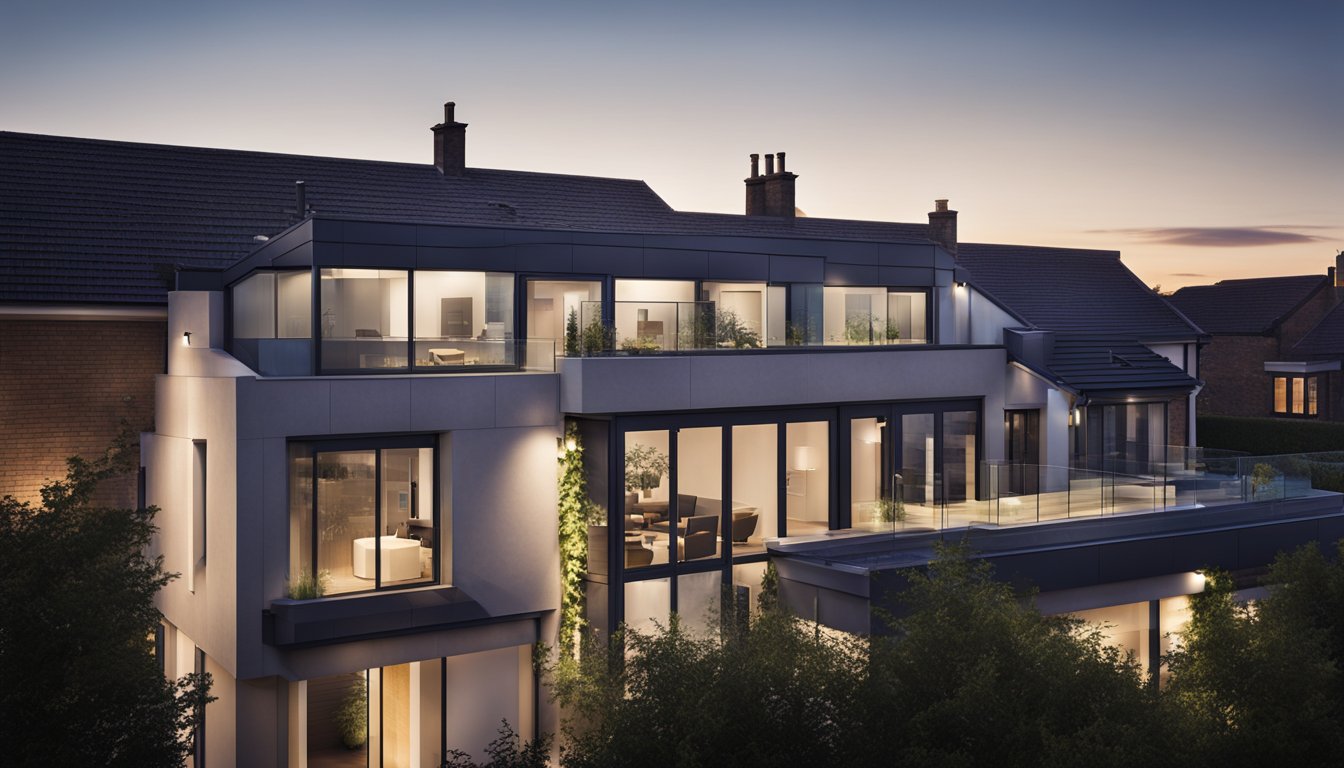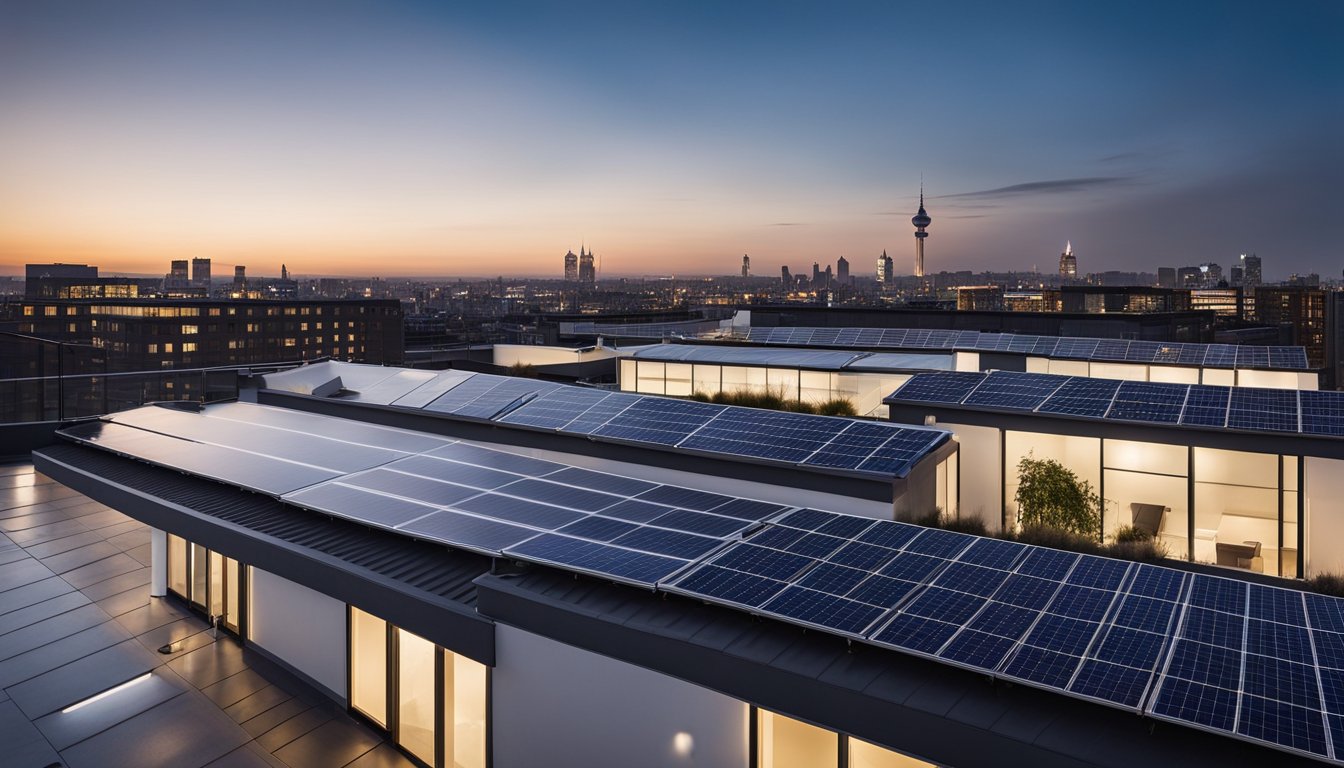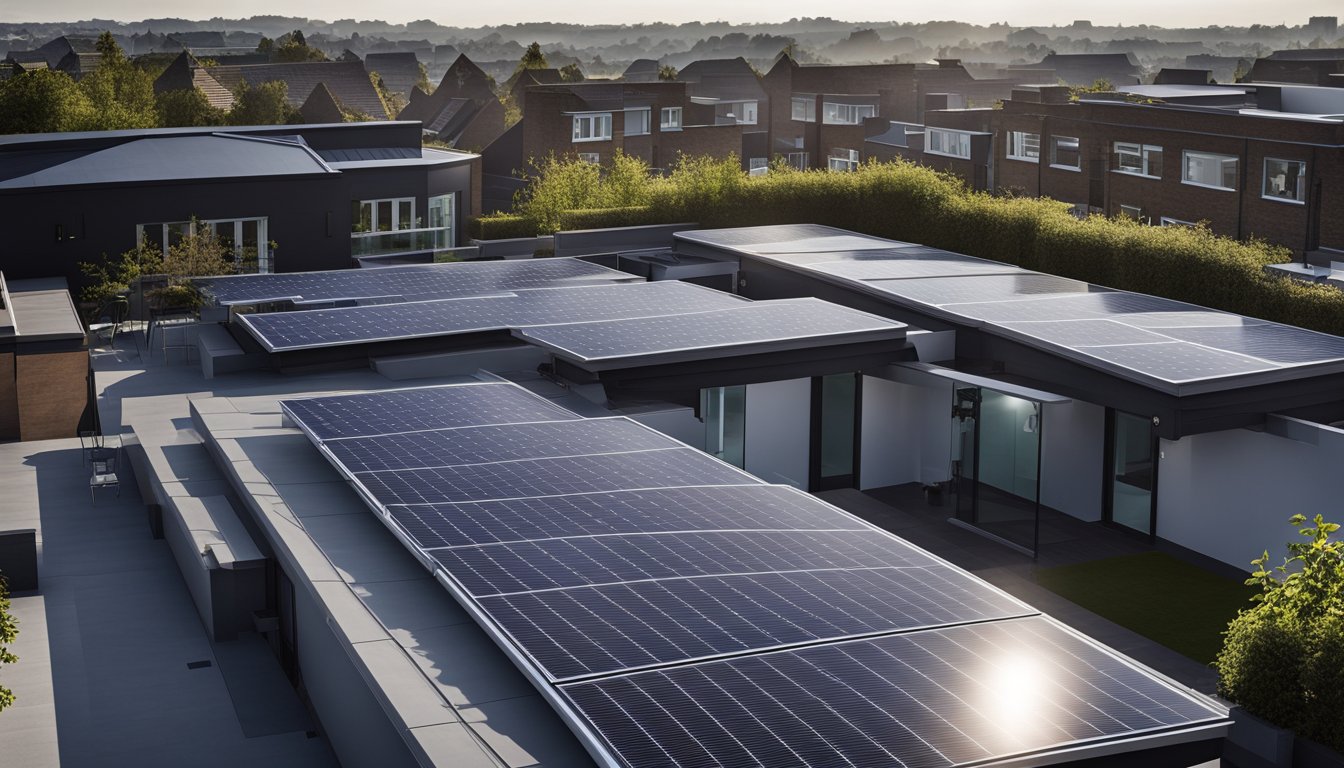Late updated: 01 Nov 2024 14:11
Written by: Oliver Bennett
Exploring Modern UK Roof Lighting Solutions: Innovative Trends and Tips
In today's ever-evolving architectural landscape, roof lighting solutions in the UK are transforming our living spaces with a unique blend of function and design. Rooflights, sometimes referred to as roof windows, are gaining popularity for their ability to bring natural light into interiors, enhancing both aesthetic appeal and energy efficiency. As more homeowners and designers seek to maximise the potential of natural light, innovative solutions like modular rooflights and flat roof installations are taking centre stage.

These modern lighting structures are not just functional but also serve as stunning architectural features. By installing rooflights, we can open up our homes, inviting an abundance of natural light to flood in, which can be particularly beneficial in urban settings where houses are closely packed. Whether your home has a flat or angled roof, rooflights provide flexible solutions that cater to both contemporary and traditional styles.
Our exploration of these innovative roofing options offers insights into their design versatility, technical efficacy, and application. As we dive deeper, we consider essential installation techniques, performance benefits, and answer the most frequently asked questions about choosing the right rooflight for any space.
Key Takeaways
- Rooflights enhance both aesthetic appeal and energy efficiency.
- They offer design versatility for different types of roofs.
- We address key queries about rooflight installation and performance.
Overview of UK Roof Lighting Options

Roof lighting is a crucial element in modern architecture, enhancing spaces with natural light. In the UK, various types cater to different styles and practical needs, each with specific installation regulations.
The Role of Rooflights in Enhancing Natural Light
Rooflights, known as skylights in the US, help increase the amount of natural light in a home. They're not just windows; they're transformative elements that change the ambience of any room. By capturing daylight, they create brighter and more energy-efficient environments. In UK homes, where gloomy weather is common, maximising daylight can significantly improve comfort and reduce dependence on artificial lighting, benefiting both architects and homeowners.
Types of Rooflights for Diverse Architectural Styles
The UK offers a diverse range of rooflight types to suit different architectural styles. Flat rooflights are discreet and ideal for modern homes. They sit flush with the roofline, providing a sleek appearance. Pitched rooflights suit traditional settings, enhancing structures with steep angles. Lantern rooflights offer a bold, classic touch, rising above the roof surface. Conservation rooflights are tailored for listed buildings or areas requiring preserved aesthetics, ensuring that historical charm is maintained while improving functionality.
Regulatory Considerations for Rooflight Installation
Installation of rooflights involves navigating specific regulations, particularly planning and building standards. Planning permission may be needed when altering the exterior of listed properties or those in conservation areas. Building regulations focus on ensuring structural integrity, insulation, and safety. For example, having the correct glazing specification to prevent heat loss or mitigate fire risk is essential. Understanding and complying with these regulations is vital to achieving a successful installation that meets both design and legal requirements.
Technical Aspects and Performance

In examining the technical aspects and performance of modern UK roof lighting solutions, we focus on thermal efficiency, customisation, and the importance of selecting qualified contractors and structural engineers. Each element plays a crucial role in ensuring the functionality and longevity of rooflight systems.
Advancements in Thermal Efficiency
Thermal efficiency is a vital consideration in rooflight design. Modern rooflights incorporate advanced glazing technologies to reduce heat loss and enhance insulation. Double or even triple-glazed units are common, featuring low-emissivity coatings and argon gas fills to improve thermal performance.
Implementing thermally broken frames helps to prevent thermal bridging. By separating external and internal aluminium frames with a non-conductive material, these systems maintain comfortable indoor temperatures and reduce energy costs.
Attention to U-values, which measure heat transfer, allows us to understand and select products that meet stringent building regulations and environmental standards.
Customisation and Structural Integrity
Customisation options for rooflights include various shapes and sizes, allowing us to choose solutions that fit different architectural needs. Bespoke rooflights can be designed for specific projects, providing tailored solutions without compromising structural integrity.
The use of structural glazing offers vast spans of minimally framed glazing, ensuring maximum light with minimal obstruction. This flexibility supports innovative design, adapting to diverse structural demands of modern architecture around the UK.
When selecting materials, considerations such as load-bearing capabilities and weather resistance are pivotal in ensuring longevity and safety.
Selecting Contractors and Structural Engineers
Choosing the right contractors and structural engineers is essential in the installation of rooflights to guarantee performance and compliance with safety standards. Skilled professionals bring valuable expertise in handling complex installations and bespoke solutions.
We recommend checking credentials and past projects of potential contractors. A well-qualified structural engineer evaluates and addresses any unusual structural challenges that may arise, ensuring the integrity of the roof and building.
By selecting experienced teams, unexpected complications during installation are minimised, providing peace of mind and preserving architectural intent. This thorough approach helps ensure that the rooflighting systems perform optimally and safely.
Frequently Asked Questions

In modern UK roof lighting solutions, current trends emphasise innovative design and energy efficiency. We examine popular materials and explore methods for installation and upkeep, while adhering to safety regulations.
What are the leading trends in contemporary British roof lighting design?
British roof lighting design is increasingly focused on minimalism with frameless solutions gaining popularity. The integration of smart technology enhances convenience. Customisable features, such as various glazing options that enhance insulation, are also in demand. Furthermore, incorporating environmentally friendly materials aligns with the push towards sustainable living.
How does roof lighting impact energy efficiency in UK homes?
Roof lighting can significantly enhance energy efficiency by maximising natural light, reducing the need for artificial lighting. We often find that modern glazed roof lights come with excellent insulation properties, aiding in thermal efficiency which reduces heating costs. Using materials that offer effective thermal breaks further elevates energy-saving measures.
What are the safety regulations for installing roof lights in the United Kingdom?
In the UK, roof light installations must comply with building regulations which ensure safety and performance. Regulations cover aspects such as load-bearing capacity, fire safety, and weather resistance. Compliance with Part L for energy efficiency and Part K for protection from falling is essential. We recommend consulting with a professional installer to ensure all standards are met.
Can you retrofit roof lights into an existing roof structure?
Yes, retrofitting roof lights is possible and often straightforward, depending on the roof's condition and structure. Existing roofs can accommodate a variety of roof lighting options. Professional assessment is crucial to determine structural feasibility and ensure that any installation modifications meet regulatory standards.
What materials are commonly used in the UK for durable and aesthetically pleasing roof lighting?
Common materials include tempered glass and polycarbonate, which provide both durability and clarity. Aluminium is often used for its lightweight and corrosion-resistant properties. In achieving aesthetic goals, these materials can be used in various finishes and tints, providing customisable options to complement a wide range of architectural styles.
How do you maintain and clean roof lights to ensure longevity and optimal performance?
Regular maintenance is vital for optimal performance. Cleaning roof lights involves using non-abrasive materials to prevent scratches. Check seals and frames periodically to prevent leaks. For hard-to-reach installations, professional cleaning services may be necessary. Routine inspections help identify potential issues early, prolonging the lifespan of the roof lights.
